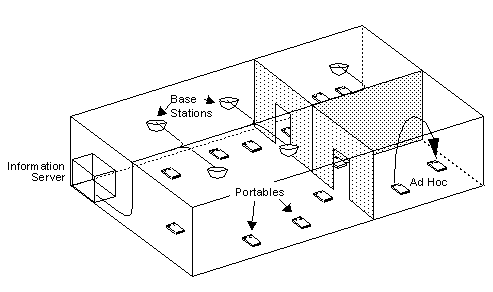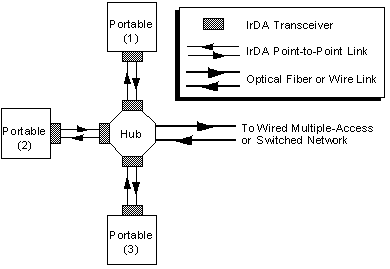
 |
Wireless CommunicationChapter: Network Concepts and Standards |
Free-space infrared links offer an economical, high-performance alternative to radio for many applications of short-range wireless communications. While the fact that infrared does not pass through walls limits the coverage that can be achieved by an infrared transmitter, it yields several key advantages. The same vast infrared bandwidth can be reused in different rooms without limit, so that infrared is unregulated worldwide. Infrared communications cannot be detected outside of enclosed spaces.

Figure: Non-directed wireless infrared LANs, showing use of wireless access to a backbone network, as well as an ad hoc network.
Traditionally, wireless infrared transmission links have been classified according to whether they employ directional or non-directional transmitters and receivers, and whether or not they rely upon the existence of an uninterrupted line-of-sight path between the transmitter and the receiver. Non-directed, non-line-of-sight, or diffuse infrared links behave much like radio links, and are used in several commercially available in-building wireless LANs.

Figure: Infrared hub allowing interconnection of IrDA-equipped devices in a multi-megabit-per-second wireless LAN.